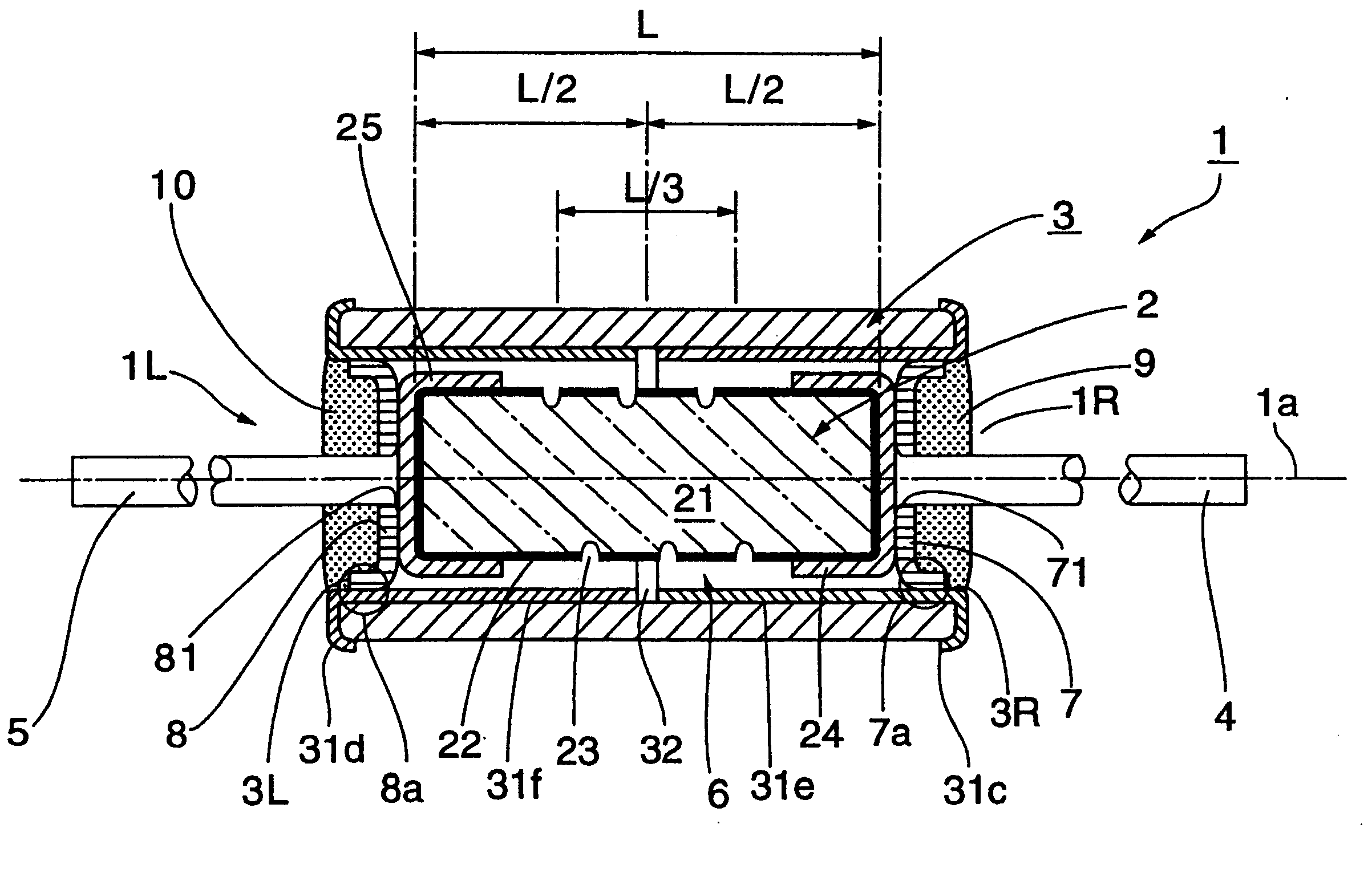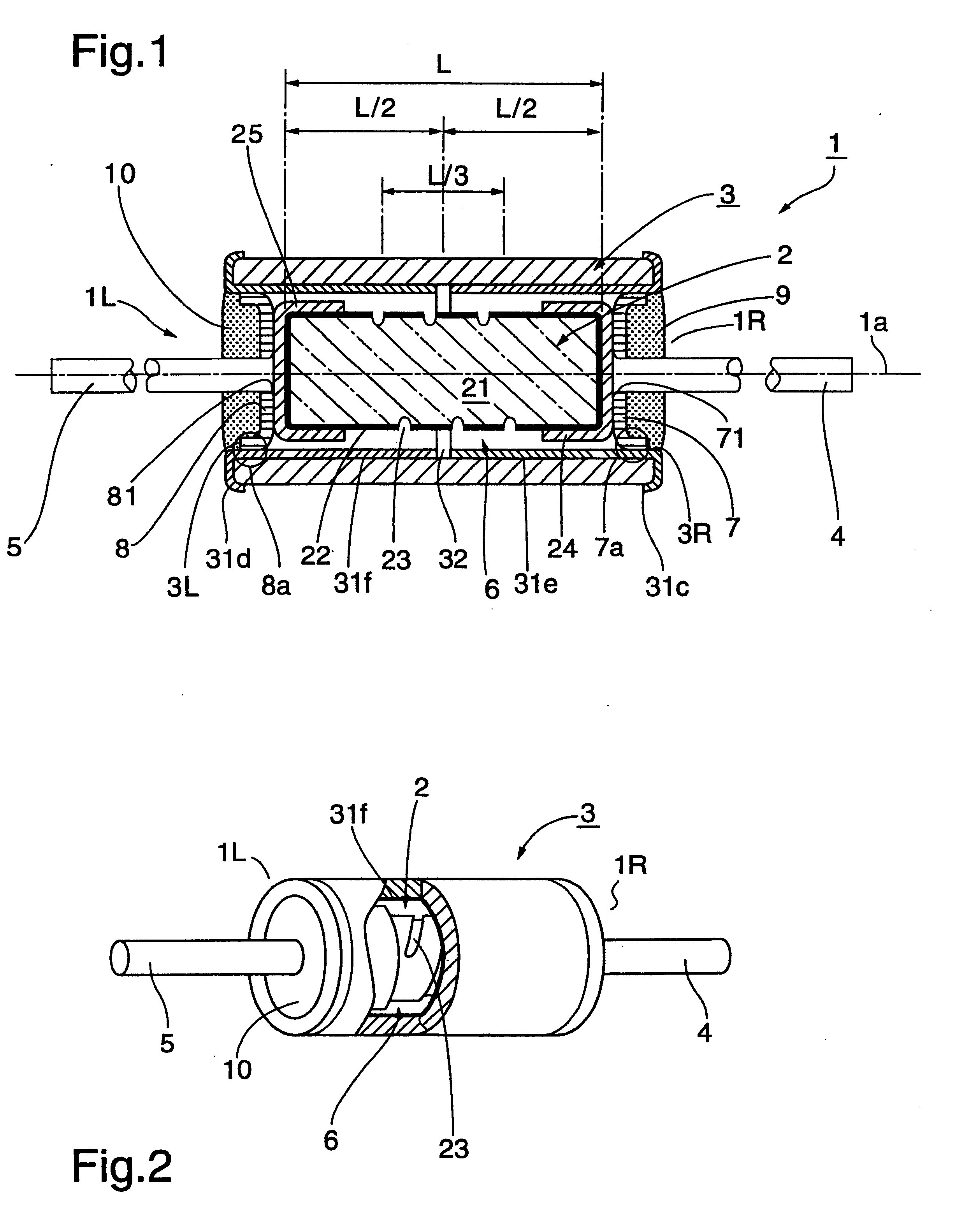Resistor for audio equipment
a technology for resistors and audio equipment, applied in the direction of resistor details, resistors, resistor enclosures/enclosements/embeddings, etc., can solve the problems of large degradation of sound quality, variation in electrical characteristics of resistance films, and high risk of magnetism giving rise to phase distortion of signals applied to resistors
- Summary
- Abstract
- Description
- Claims
- Application Information
AI Technical Summary
Benefits of technology
Problems solved by technology
Method used
Image
Examples
first embodiment
FIGS. 1 to 4 show the resistor according to the invention. As shown by the drawings, a resistor 1 for audio equipment comprises a cylindrical resistor body 2, a tubular sheath 3 that covers the resistor body 2, a first lead wire 4 extending from a resistor first end 1R along axis 1a, and a second lead wire 5 extending from a resistor second end 1L along axis 1a. A space 6 having an annular section is formed between the resistor body 2 and the sheath 3.
The resistor body 2 includes a cylindrical ceramic substrate 21. A resistance film 22 of a prescribed thickness is formed over the whole of the surface of the substrate 21. The resistance film 22 is comprised of carbon, nickel-chrome, tin oxide or the like, and can be formed by a coating method such as pyrolysis, sputtering, plating and the like. A spiral groove 23 having a constant width is formed in the resistance film, exposing the substrate surface. The groove 23 is used to adjust the resistance of the resistor 1.
A cap electrode of...
second example
FIG. 5 is a diagram showing a longitudinal cross-sectional view of a leadless resistor according to a second embodiment of the invention. Except for the fact that the resistor 100 of this example is leadless, the basic configuration is the same as that of the first embodiment. Therefore, with reference to FIG. 5, identical parts have been given the same reference numbers or symbols, and only different parts will be described here.
With respect to the resistor 100, internal electrodes 101, 102, made of conductive material, are attached to end portions 2R, 2L of the resistor body 2, and over these are fitted conductive cap electrodes 24 and 25. Cap electrode plates 7A and 8A do not have through-holes for leads. Annular external electrodes 103 and 104, formed of conductive material, are affixed at the ends of the sheath 3, over the annular end faces and outer peripheral portions. The external electrodes 103 and 104 have electrical continuity with the conductive film 31 covering the surf...
PUM
 Login to View More
Login to View More Abstract
Description
Claims
Application Information
 Login to View More
Login to View More - R&D
- Intellectual Property
- Life Sciences
- Materials
- Tech Scout
- Unparalleled Data Quality
- Higher Quality Content
- 60% Fewer Hallucinations
Browse by: Latest US Patents, China's latest patents, Technical Efficacy Thesaurus, Application Domain, Technology Topic, Popular Technical Reports.
© 2025 PatSnap. All rights reserved.Legal|Privacy policy|Modern Slavery Act Transparency Statement|Sitemap|About US| Contact US: help@patsnap.com



